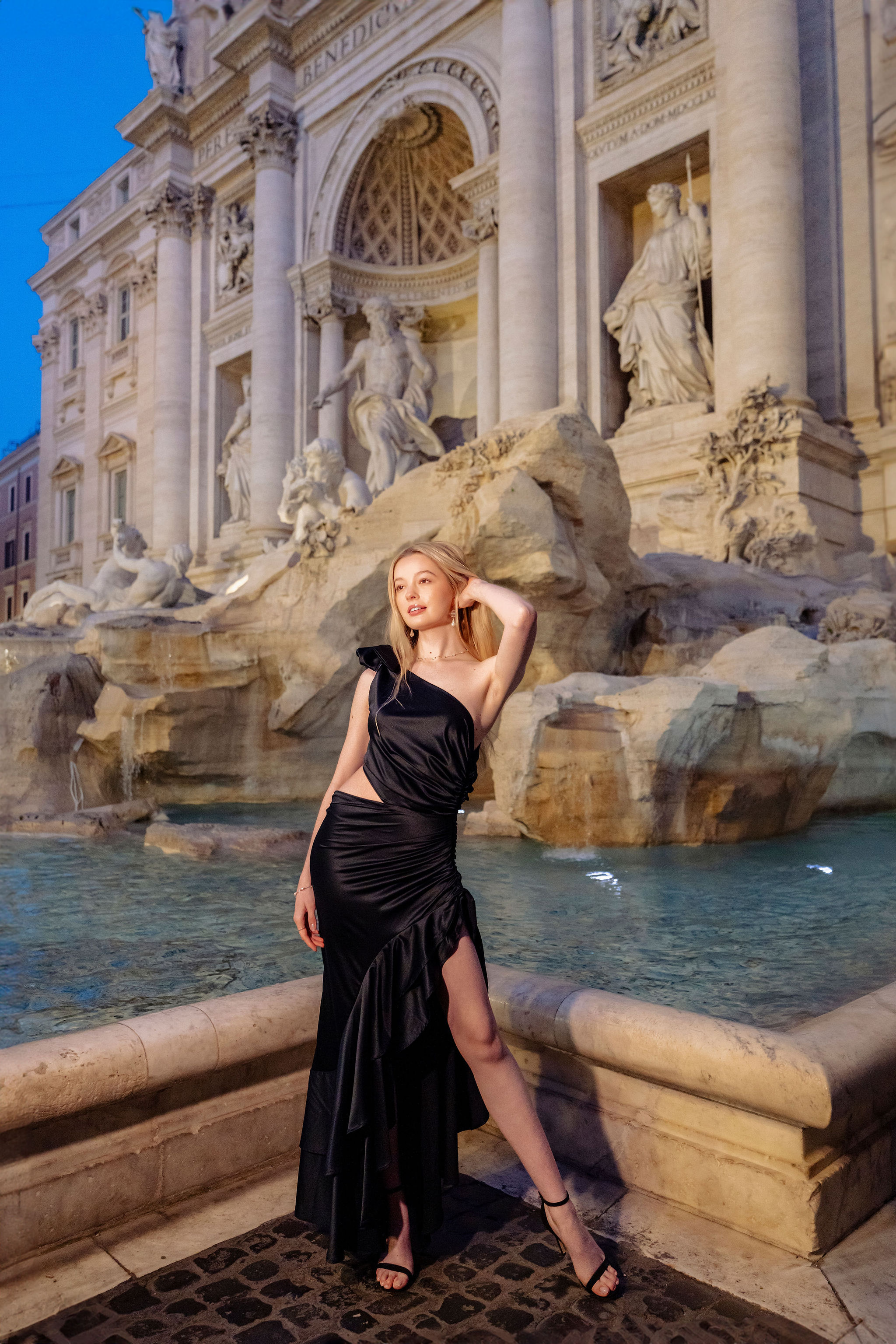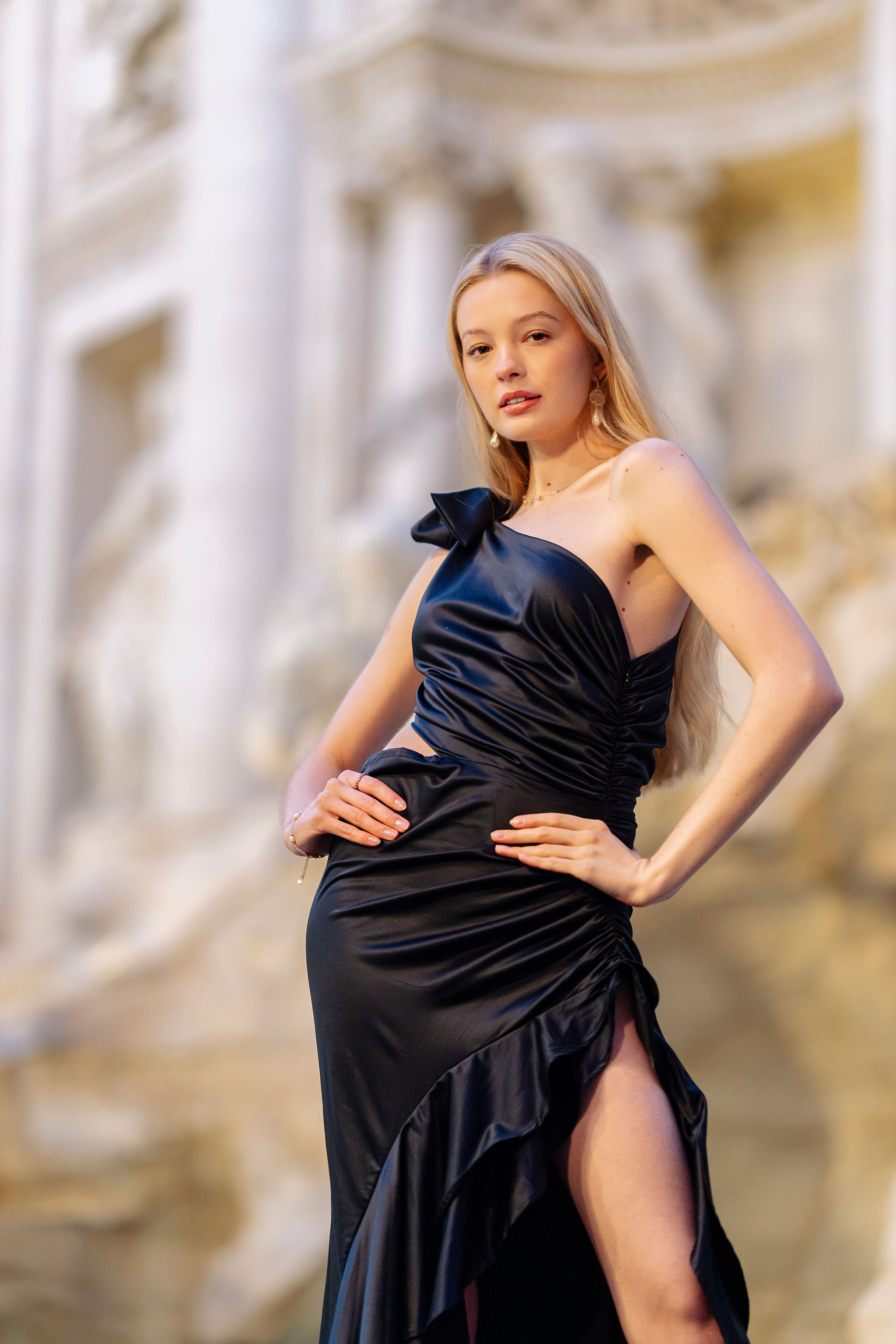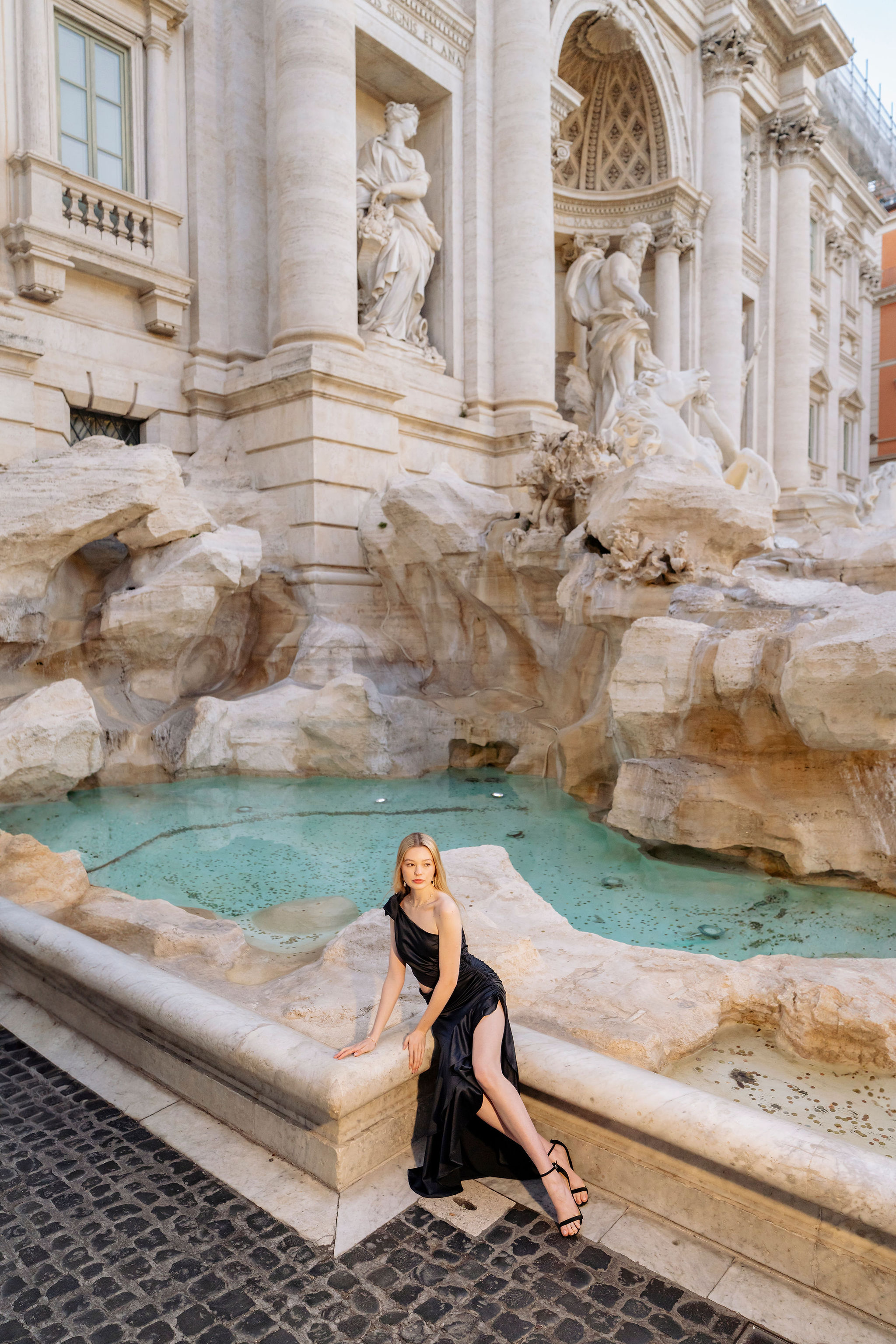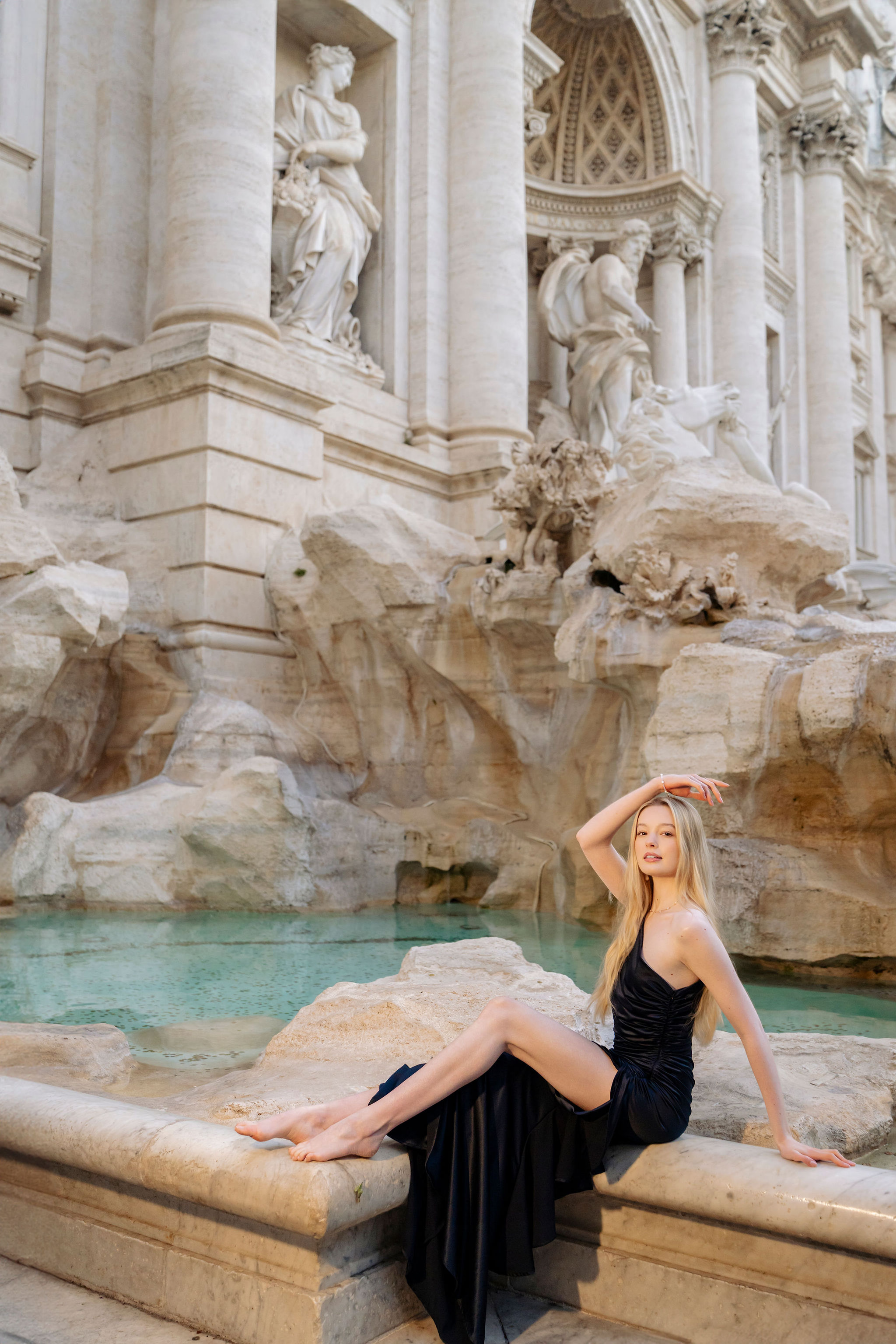Everyone dreams of that magical photo at the Trevi Fountain. But what's the reality most tourists face? Swarms of people, harsh midday sun, and a struggle to find a tiny open space.
As your photographer at Eidos Photography, I'm here to let you in on a professional secret: the most magical, cinematic, and cleaner photos at the Trevi are not taken at sunrise. They are captured just before sunrise, during a fleeting window we call the "Blue Hour."
If you are looking for truly ideal and artistic results, this is the time to choose. In this guide, I'll tell you exactly why.

Many people believe the "Golden hour (the warm light after sunrise) is the best time. But at Rome's iconic locations, there is a shorter, more magical window just before it.
I personally love this timeframe because it creates a stunning, cinematic color contrast. During these twilight moments (for example, between 6:00 AM and 6:30 AM in summer), the warm, yellow artificial lights illuminating the fountain and surrounding buildings are still on. Meanwhile, the sky is not black but has turned a deep, rich, velvety blue.
This combination of warm yellow light from the lamps and cool blue light from the sky creates a dramatic, dreamy atmosphere that is impossible to replicate at any other time of day. This is what we call the "golden-blue" color contrast.
Explore Our Rome Photoshoot Packages (including the Colosseum package to continue your morning).

All of Rome's iconic locations, including the Trevi, have automatic city lighting. Typically, these lights (which give off that signature yellow glow) are set to typically turn off around sunrise when their sensors detect daylight.
This means our cinematic window is incredibly short. It’s a race against time.
The key detail, which I manage as your Rome photographer, is that the exact timing for this changes with every season and every month.
My job is to know this schedule precisely to ensure we are on location during that perfect, fleeting window.

To give you a clear idea, here is a table of average sunrise times in Rome. Our magic "Blue Hour" window begins approximately 30-45 minutes before these times.
(Important Note: These are approximate times. Italy observes Daylight Saving Time (DST). Clocks "spring forward" one hour in late March and "fall back" one hour in late October. It is my responsibility to confirm the exact schedule for your specific photoshoot date.) “Time Change in Italy”

The lighting during the Trevi blue hour is unique, and your wardrobe choice can amplify its effect. Since the travertine stone of the fountain is light and the lighting is dramatic, these palettes work best:

The window is short, so we move fast. I use pre-selected micro-spots that I know work. We rotate through them quickly to capture variety before the lamps switch off and the first-light color shifts. There’s no time for long, static posing—expect natural prompts and quick transitions.
As your professional photographer, my job is to be honest. A pre sunrise rome photos session has a few risks:
We accept these small risks because the reward—photos that literally no one else has—is worth it.

The beauty of this plan is that as soon as our session at the Trevi is over and the lights go off, the true "Golden Hour" is just beginning. We immediately use that new, warm light and head to our next location.
My clients often combine this session with a shoot at the Colosseum and Capitoline Hill, capturing two completely different light experiences (cinematic blue and warm gold) all in one morning.
If you, like me, are looking for something more than a standard tourist photo and want to create a cinematic work of art, the trevi blue hour was made for you.
Contact us to book your Rome Photoshoot and let's talk about planning a pre-sunrise session.